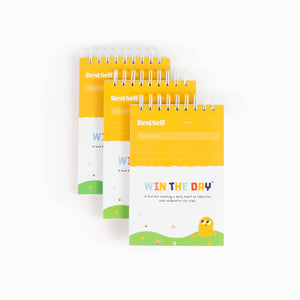Children's journals are more than just notebooks filled with doodles and scribbles. They're budding spaces where creativity takes form and where personal growth can develop over time. The practice of journaling allows kids to articulate their dreams, process their emotions, and visualize their goals. For many young minds, it's an adventure between pages that enhances imagination and reflection. But, as many parents and educators will attest, the path to creating a journaling habit isn't always smooth.
Parents often encounter a few common hurdles when encouraging kids to keep a journal. From waning interest and infrequent use to the struggle of keeping entries organized, these obstacles can diminish the enthusiasm both parents and children initially feel. Addressing these challenges with clear, practical solutions can help keep the journaling experience rewarding and inspiring for children.
Lack of Interest from Children
Keeping a child engaged with their journal might seem straightforward, but it's far from a given. Kids, understandably, might lose interest if it feels more like a task than a fun activity. They might find it dull or simply too challenging, especially if they don't see or feel the immediate benefits.
There are ways to make journaling an inviting and enjoyable activity. Here are some simple ideas:
- Incorporate colorful prompts: Use topics that resonate with your child’s current interests, whether it’s dinosaurs, space, or a favorite cartoon character. This makes the writing process more engaging for them.
- Enhance the journal experience with stickers: Kids love stickers, and using them for decoration not only adds fun but also a sense of achievement for every completed page.
- Allow personalization: Encourage your child to decorate their journal cover, perhaps using paints, washi tapes, or drawings. This adds a personal touch and makes the journal truly theirs.
Alternating between writing and drawing can also help keep things fresh. What's important is that these journals become a creative outlet, not just another chore. Making the experience enjoyable will naturally increase a child’s interest and motivation to share their thoughts more often.
Inconsistent Journaling Habits
Establishing a regular journaling routine can be tough for kids. Life is full of distractions, and children naturally have varying interests that compete for their attention. Consistency can falter quickly if journaling isn't part of their routine.
To help kids develop a steady journaling habit, consider these ideas:
- Set a regular time: Identify a specific daily or weekly time for journaling. Whether it's after dinner or before bed, a set schedule adds structure.
- Link to daily routines: Pair journaling with an established habit, like brushing teeth or bedtime reading. This makes journaling a natural extension of routines they're already familiar with.
- Start short: Encourage brief entries. A few sentences or a quick drawing can suffice. The aim is building consistency, not length or depth at first.
When kids see journaling as something to look forward to rather than an obligation, it becomes a habit rather than a task.
Parental Involvement
Parents play an important role in motivating their kids to keep writing, but they face the challenge of offering encouragement without being too controlling. Children tend to resist activities when they feel pressured, so a gentle approach is key.
Here are some tips:
- Join in journaling sessions: Sit down and write together. This shared experience often turns into a bonding moment.
- Show interest: Ask about their journal entries and listen actively to what they're willing to share. This validates their effort and encourages them without pressure.
- Offer positive reinforcement: Praise their consistency or creativity instead of the content. This builds their self-confidence in journaling.
Balancing support and independence helps children connect positively with the experience of journaling, promoting personal expression.
Keeping the Journal Organized
Children's journals can quickly become chaotic. Pages filled with ideas, stories, and doodles can turn messy, leading to frustration or loss of the journal itself. Some organizational skills are handy to keep a journal tidy.
Suggestions include:
- Use sections or tabs: Help kids categorize entries into sections for different topics like stories, drawings, and daily reflections.
- Teach simple organization skills: Guide them in choosing how to arrange entries and use bookmarks or ribbons to mark frequently used sections.
- Encourage periodic reviews: After a few entries, encourage a look back to rearrange or revisit pages, anchoring memories and ideas.
Organizing journals can be as expressive and creative as the entries themselves. When children see their thoughts laid out clearly, they often feel more encouraged to continue.
Summarize Key Points
Journaling can be a meaningful pastime for children if nurtured with care and understanding. Recognizing and addressing the common challenges—like maintaining interest, establishing habit regularity, effective parental involvement, and keeping entries organized—can transform journaling from a mundane activity to an adventurous explosion of creativity. By supporting our kids on this journey, we ensure they discover the joys of self-expression, creativity, and reflection.
Encouraging a child's journaling journey can bring delightful results, from enhanced creativity to improved emotional expression. To further support this rewarding habit and find more resources, explore the children's journals at BestSelf Co., where you'll discover tools designed to enrich your child's experience.






































